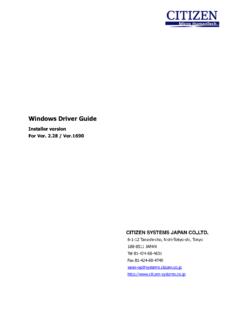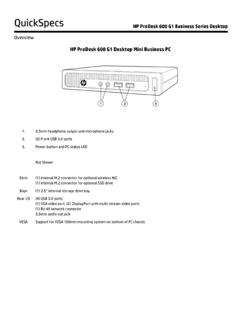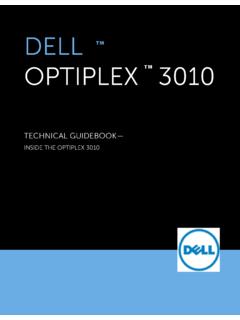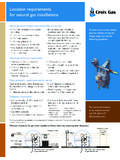Transcription of Different types of Operating Systems - Faculty of ICT
1 Oct-031 Different types of Operating Systems There are several architectures which all require a Different OS: Desktop PCs parallel Systems Distributed Systems Clustered Systems Real-time Systems Embedded SystemsOct-032 Desktop Systems Personal Computers computer system dedicated to a single user. I/O devices keyboards, mice, display screens, small printers. User convenience and responsiveness. Can adopt technology developed for larger Operating system Often individuals have sole use of computer and do not need advanced CPU utilization of protection features. May run several Different types of Operating Systems (Windows, MacOS, UNIX, Linux)Oct-033 parallel Systems Multiprocessor Systems with more than one CPU in close communication.
2 Tightly coupled system processors share memory and the internal clock; communication usually takes place through the shared memory. Advantages of parallel system : Increased throughput Economical Increased reliability graceful degradation fail-soft systemsOct-034 parallel Systems (Cont.) Symmetric multiprocessing (SMP) Each processor runs an identical copy of the Operating system . The OS code is usually shared. Many processes can run at once without performance deterioration. Most modern Operating Systems have SMP support. OS has to cater for protection of data. Asymmetric multiprocessing Each processor is assigned a specific task; master processor schedules and farms work to slave processors. More common in extremely large Systems like mainframes with hundreds of Multiprocessing ArchitectureOct-036 Distributed Systems Distribute the computation among several physical processors.
3 Loosely coupled system each processor has its own local memory; processors communicate with one another through various communications lines, such as high-speed buses or network communication. Advantages of distributed Systems . Resources Sharing Computation speed up load balancing Scalability Reliability Fail-Safe Communications May make use of commodity platforms. OS has to cater for resource sharing. May be either client-server or peer-to-peer Structure of Distributed Client-ServerOct-038 Clustered Systems Clustering allows two or more Systems to share storage. Provides high reliability. Asymmetric clustering: one server runs the application while other servers standby. Symmetric clustering: all N hosts are running the application.
4 Used mainly for database applications where a file server Systems Often used as a control device in a dedicated application such as controlling scientific experiments, medical imaging Systems , industrial control Systems , and some display Systems . Well-defined fixed-time constraints. Real-Time Systems may have either hard or Systems (Cont.) Hard real-time: Secondary storage limited or absent, data stored in short term memory, or read-only memory (ROM) Conflicts with time-sharing Systems , usually not supported by general-purpose Operating Systems . Soft real-time Limited utility in industrial control of robotics Quality of Service Useful in applications (multimedia, virtual reality) requiring advanced Operating - system Systems Personal Digital Assistants (PDAs) Cellular telephones Issues: Limited memory Slow processors Small display screens.
5 Usually most features of typical OS s are not included at the expense of the developer. Emphasis is on I/O operations. Memory Management and Protection features are usually of Sectio







